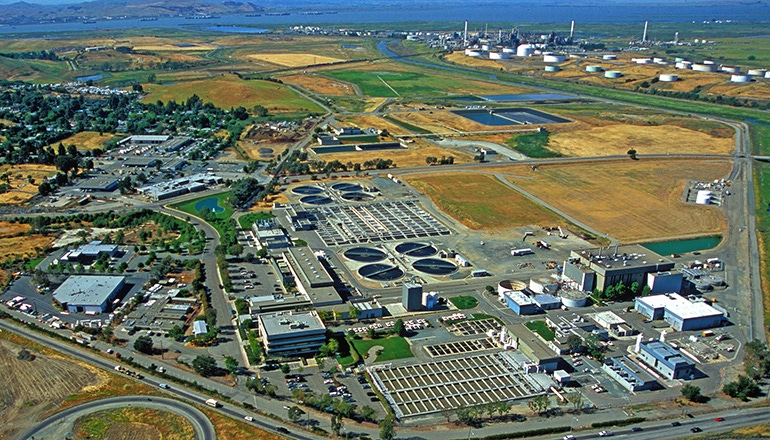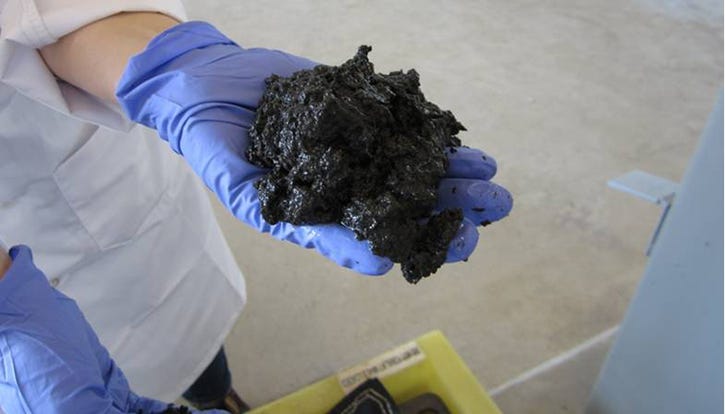The process, hydrothermal liquefaction, is used to convert wet organic wastes at high temperature and pressures into renewable crude.

Central Contra Costa Sanitary District in Martinez, Calif., is about to launch a pilot at its wastewater treatment plant to make renewable liquid transportation fuels from mixed, wet organic waste that would otherwise ship to landfill.
Developed by the U.S. Department of Energy’s (DOE) Pacific Northwest National Laboratory (PNNL) and Genifuel, manufacturers of organic waste conversion equipment, the process, called hydrothermal liquefaction, is leveraged to convert wet organic wastes at high temperature and pressures into renewable crude. This crude can be upgraded with hydrogen into gasoline, diesel and jet fuel.
The process can deal with waste composed of 70 to 90 percent water, making it ideal for very wet streams.
“With this technology, we envision a strategy to utilize a variety of organic wastes including food waste, municipal wastewater sludge and algae. It’s been tested with successful results on each of these,” says Jonathan Male, director of the Bioenergy Technologies Office at DOE’s Office of Energy Efficiency and Renewable Energy.

Hydrothermal processing (a broader term that hydrothermal liquefaction falls under) converts a significantly higher fraction of organic waste than anaerobic digestion (AD). Consequently, it minimizes residual waste that requires disposal. And it avoids methane emissions, which are more than 25 times more potent as a greenhouse gas than carbon dioxide.
SoCalGas invested $3 million in grant money awarded by the California Energy Commission to support the Central Contra Costa pilot.
“We have followed this technology for a while and like that it can deal effectively with wet biomass,” says Ron Kent, technology development manager at SoCalGas.
The natural gas utility has a goal of distributing 20 percent renewables by 2030 and is looking at several possible approaches: gasification, AD and hydrothermal processing.
“Hydrothermal processing, in particular, interests us because it uses all the biomass, is more energy efficient, has a smaller footprint and capital costs can be less than gasification and AD,” says Kent.
After hydrothermal liquefaction, biocrude and water come out the back end. These substances are separated prior to applying hydrogen in order to convert the crude and upgrade it to renewable fuels.
The Central Contra Costa pilot will focus on hydrothermal liquefaction, particularly the water or aqueous phase that follows it, looking at two alternative processes.
One process involves cleaning water to make heat utilized by industrial plants. The other water phase process, called catalytic hydrothermal gasification, converts residual hydrocarbon in water to make renewable methane, says Male.

In previous research, PNNL sent upgraded fuel in the form of diesel to Colorado State University to be tested on engines. It performed to industry standards when 5 to 15 percent of it was blended with conventional diesel.
Speaking of the soon-to-launch pilot, Male says, “We see this as an opportunity to work with the Water Research Foundation, who is a lead in the Central Contra Costa project, to share results with wastewater treatment plants across the U.S. We will be able to educate this risk-adverse sector, who is particularly sensitive to how their operations could affect water quality. We also see being able to divert wet waste from landfill, leveraging hydrothermal liquefaction, as extremely beneficial,” he says.
PNNL has looked at the technology using potatoes, sludges, grape pumice and beet skins diverted from municipal solid waste disposal sites. The researchers began by processing less than 1 liter a day and eventually scaled up to 12 liters an hour using multiple organic waste streams. But the Central Contra Costa project will be much larger. It will process 15,000 liters per day of organic material.
“In 2015, California wastewater treatment plants hauled 270,000 wet tons of indigestible biosolids to landfills. This costs millions and results in enormous amounts of air emissions from hauling it,” says Kent.
“I fully expect the pilot to be successful and think there will be rapid adoption of the technology for the wastewater industry to mitigate costs and pollution. I also see it as an important diversion tool that will save landfill space,” he adds.
About the Author(s)
You May Also Like




